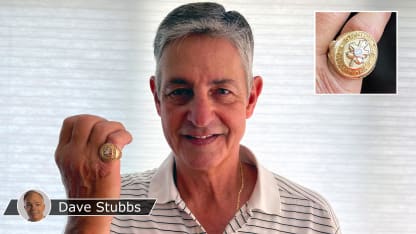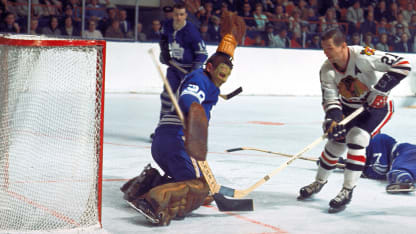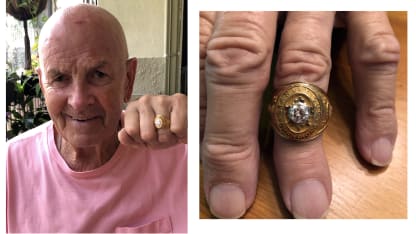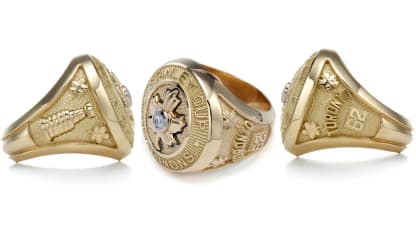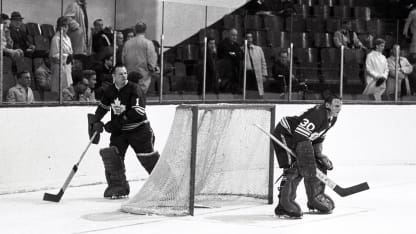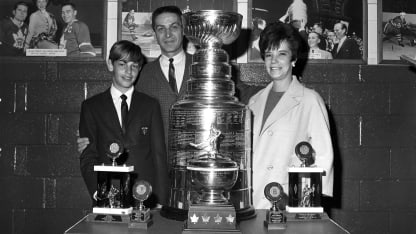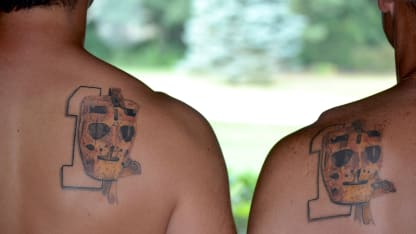He was put in touch with Mike Ferriman of the Maple Leafs, who directed him to Tiffany & Co. in New York. Nine months after the wheels were first set in motion, Sawchuk now wears a ring that commemorates his father's fourth and final Stanley Cup championship, having won previously with Detroit in 1952, 1954 and 1955.
"The loss of my dad's rings had been bothering me for a long, long time, eating at me for years," Sawchuk said during a recent talk from his home in White Lake, Michigan. "I'm about to turn 67, nearing retirement, so my wife, Laura, and I thought that maybe this was the time to do this."
Terry Sawchuk is in every discussion involving the greatest goalies in NHL history. In addition to his four Stanley Cup titles, he won the Vezina Trophy voted as the best goalie in the NHL in 1951-52, 1952-53 and 1954-55, then shared with Toronto's Johnny Bower in 1964-65, and the 1950-51 Calder Trophy recipient voted as the NHL rookie of the year.
An 11-time all-star, Sawchuk led the NHL in victories five consecutive seasons (1950-55) and when he retired in 1970 after 21 seasons, having played for five teams, the Winnipeg native was the NHL all-time leader in wins (447), a record that stood for three decades, and shutouts (103), which survived 39 years until New Jersey Devils goalie Martin Brodeur earned his 104th on Dec. 22, 2009.
Three times a member of the Red Wings, he also played for the Boston Bruins, Maple Leafs, Los Angeles Kings and finally the New York Rangers in a career that lasted from 1949-70. He was inducted into the Hockey Hall of Fame a year after his death on May 31, 1970.
